All in the Family Inside the mind and studio of third-generation artist Megan Atwood Cherry
From the Winter 2017 Issue
Marie-Dominique Verdier
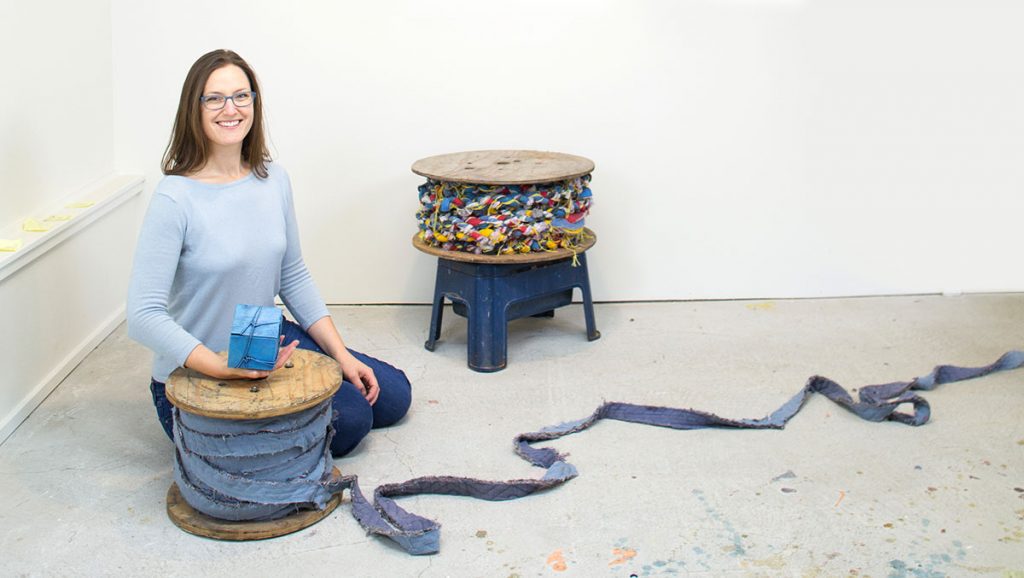
“I think our ideas about home are strongly matrilineal,” said Megan Atwood Cherry, a third-generation Sandpoint artist whose work often uses familiar materials in an unexpected manner, exploring such themes as home, family, loss and the cycle of life.
Atwood Cherry is in her industrial studio off Gooby Road — it houses several artists, including husband James Cherry, a local woodworker — photographing a quilt she made from simple house shapes cut from alternating values of a blue moving blanket. Atwood Cherry is getting ready for an upcoming exhibition with her mother, Ann Porter, an art professor at South Dakota’s Black Hills State University, and sister Casey Page, a commercial photographer whose work includes staff photography for the Billings Gazette.
Porter, whom Atwood Cherry describes as a “whip-smart, hard-working force to be reckoned with,” had a profound influence on both Atwood Cherry and her sister.
“She taught both my sister and me to use different materials and processes, of course, but she also taught us to be intelligent viewers of concept/content-rich artworks. We bantered formal and conceptual ideas back and forth when I was growing up, and we continue to do so to this day. She is one of my primary artistic co-conspirators.”
Atwood Cherry points to a painting on the wall of her studio. She painted it at age 6, capturing her mother painting for a North Idaho College class. Ironically, Atwood Cherry would decades later take a similar painting class from the same NIC instructor, Allie Vogt, and teach at the college.
Vogt taught her “not to crush my work with love,” said Atwood Cherry, who has learned to put her work aside, as needed, reworking it or even destroying it altogether. Often she will start a new series even while completing other work.
Sure enough, elsewhere in the studio is a piece that might evolve into a new series; nearby is a three-dimensional painting resembling an oversized version of a pale yellow sticky note, like the ones in her studio reminding her of places to go, things to do.
“I tend to chase a concept instead of a single material,” she said of her work.
In 2007, working at now-closed Barush Woodworking, she became intrigued with scraps of wood and metal. She assembled this into an exhibition called “Collected.”
She continued exploring accumulation and loss in her 2010 “Dot” series (some are still on display at Pend d’Oreille Winery). Applying and sanding repetitive layers of tinted plaster over various sizes of dome-shaped circles allowed each form to express itself through color, texture and pattern. “Each life is brought to fruition by a natural cycle of giving and taking away,” she wrote in her artist statement.
“Shipping and Handling” in 2013-14, a series of macro views of banal objects, established her as a formidable painter and marked her entrance to graduate school which, along with teaching college, pushed her work in new directions.
Her work “reflected an appreciation, if not a preoccupation, with material(s) and construction, both as content and process,” said local artist Stephen Schultz.
“It was this incredible leap from the work I was making before teaching to the work I’m making now, because I was into fresh ideas,” said Atwood Cherry, who has taught since 2010 at NIC’s Coeur d’Alene campus, as well as outreach centers in Sandpoint, Bonners Ferry and the Silver Valley.
In “[be]LONGING,” her Master of Fine Arts thesis exhibition, Atwood Cherry wove together themes of home and family both figuratively and literally. “Home Sweet Home #2,” for example, features the house shape stitched onto lumber-wrap which is stretched taut in an oversized embroidery hoop.
“It seems Megan’s recent work has brought a deeper dimension to the table,” Schultz said, about her thesis work.
“These vignette/tableau installations access a perhaps more personal relationship to history … of familiar things and remembered things … of home. The pieces evoke a sensation of being homespun.”
The exhibition was sparked by a scrap of wallpaper from her childhood bedroom, as well as experiencing the loss of her maternal grandmother, Joan Wanamaker, a photographer and volunteer for many groups. “I didn’t realize it at the time, but [Joan] was teaching me to regard public service as a natural part of one’s daily life,” said Atwood Cherry, who was appointed to Sandpoint Arts Commission in 2016.
When she’s not volunteering, making art or teaching, Atwood Cherry has a side business doing trompe l’oeil painting, such as creating the look of granite, and housepainting, which she likes for the repetition, the discipline and the simplicity of the pure act of applying paint to a surface. It also is a teachable moment when describing the realities of making a living as an artist.
“There’s a responsibility to tell students that (making a living is hard) when they’re going into the arts,” she said. Atwood Cherry also works with her husband in his studio, drawing on her prior experience as finishing and productions manager for Barush. She does much of the sanding and finishing for his custom furniture.
The couple, who met years ago at a artist’s cooperative, collaborates often. “Working together is our powerzone,” she said, noting he brings her work to another level with thoughtful, direct, honest input. “I don’t know what I’d do without it.”
Atwood Cherry’s interest in collaboration may stem from her education in studio art and theatrical set design. Or it may come from family, both her paternal and maternal sides. Her father, Dana Riffe, and stepmother, Vicki Pierson, have collaborated in business and in the studio. Her stepfather, Jerry Porter, is a well-practiced musician. On her father’s side, Atwood Cherry describes grandparents Norman and Barbara Riffe of Hope as “makers.” Her grandpa did lapidary — Atwood Cherry’s “Dot” series curiously resemble cut-open gemstones — while her grandmother worked in fiber art and staunchly advocated the “waste not, want not” motto.
“She wove creativity into her everyday life, always valuing the handmade over the mass-produced. “Perhaps this guides Atwood Cherry’s tendency to collect and revere odd scraps.
“I kept some of her art supplies when she passed,” said Atwood Cherry, “and I use them often.”

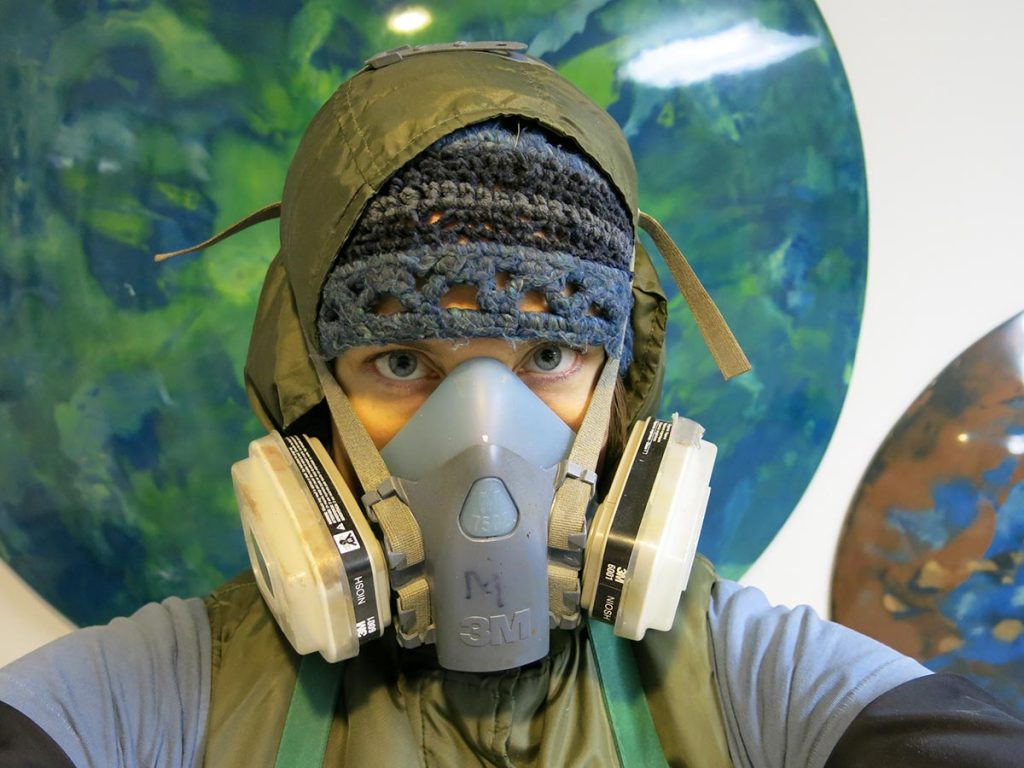
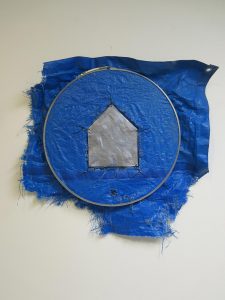
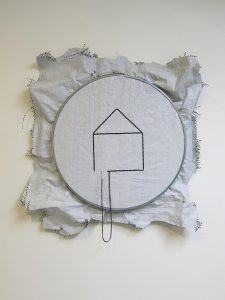
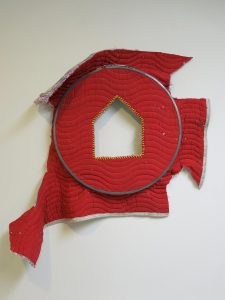



Leave a Reply